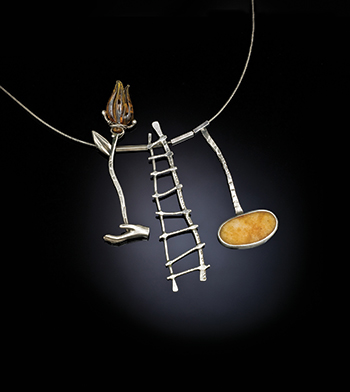
Written by Laura Billingsley
Some 6,000 images. Nearly 1,000 applicants. Five jurors. One room. These numbers sum up the selection process for the Des Moines Arts Festival, where this year fewer than one in five applicants was invited to participate in the juried exhibition.
The Arts Festival, June 26-28 in Western Gateway Park, has received numerous awards over the years, frequently ranking as one of the nation’s top 10 art fairs. It’s a premier festival for artists because “people buy art here,” says Executive Director Stephen King. “(The artists) trust Des Moines; they know it’s going to be a good show.”
Selection for the festival happens by “projection” jury, meaning artists submit images of their art that the jurors then view. Last December, five jurors spent close to 24 hours in a room viewing images from this year’s applicants. Each artist submitted six images—five works and a booth image—which were projected onto large screens. Jurors provided a score from one to seven during the first round for each category, then voted up or down through subsequent rounds (sometimes as many as five or six) until they reached the required number of artists.
Of the 966 applicants for the 2015 show, 183 were selected. King says the decision process involves not only determining which artworks are the best, but also creating a balance among various mediums and styles, such as paintings, textiles and jewelry. To help ensure that balance, King spends weeks prepping before the jurors ever see an image.
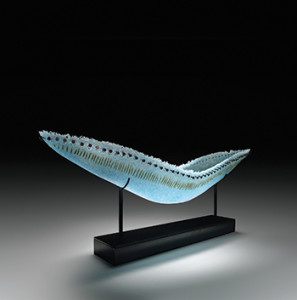
Washington artist Patty Roberts creates glass vessels by placing thick layers of a crushed glass paste into a mold and then firing the pieces in a kiln.
Specifically, he personally reviews all applications, which are collected through an online process using a system called ZAPP. King provided input for the development of the system, and it’s become the standard for juried art festivals. During his review, King wants to help each artist have the best chance of being selected, which may mean contacting artists to suggest, for example, they submit a clearer booth shot or resize images for easier viewing.
“It’s my job to go through and check every single application,” he says. “I want to make sure every artist who has an opportunity in the jury room has the best opportunity.”
After this behind-the-scenes work, the images are ready for the jury. When selecting jurors, King says he tries to “mix it up.” They can be any age and can be from Des Moines or elsewhere. He’s never used the same juror twice, though he says he wouldn’t necessarily be against it. Two are peer jurors, selected from the award-winning artists who exhibited the previous year. For the 2015 festival, the peer jurors were Michael Schwegmann and Dylan Strzynski; others were Greater Des Moines artists Stephanie Brunia and Robert Reeves and West Des Moines gallery owner Susan Watts.
This year, King says he purposely chose a younger jury. “It was just kind of an experiment—let’s see what happens to the makeup of the artists if we skew a little younger,” he says.
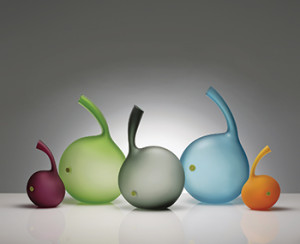
Strzynski, who won the 2014 Best of Show award, is a mixed-media artist who lives near Ann Arbor, Mich. He says being on the jury filled him with a sense of responsibility, noting that he recognizes artists depend on festivals like this to make their living. “This is their way of life,” he says, “and I’m deciding who gets to work that weekend.”
Watts, the owner of Olson-Larsen Galleries in Valley Junction, says the jury room was filled with spirited discussion about the artworks. “I had my mind changed several times,” she says. Although Watts has extensive experience selecting art, she had never before been asked to consider such a large number of pieces.
“I didn’t know how hard it was going to be,” she says. “There’s so much talent out there.”
During the selection process, jurors use a room that can be blacked out—this year, the room was in Community Choice Credit Union Convention Center at Veterans Memorial. On the first evening, jurors view every image. Because they’re looking for balance, “they need to see the entire body of applications to be able to contemplate that,” King says.
This initial viewing is open to the public. Afterward, the jurors and King go out to dinner to get to know one another. They go home to sleep, and everyone is back by 8 a.m. They eat lunch together in the jury room, then go out to dinner again before heading home. The process is repeated the next day. “I have them for two days straight,” King says.

The proximity encourages jurors to develop camaraderie.
“We were very comfortable with each other,” Watts says. “People really put up fights for who they wanted.”
After the first-round numbered scoring is over for all mediums, King goes to work. He finds the average score and comes up with a cutoff score for artists to advance to the second round. At this point, jurors have to raise their hands to vote to keep an artist in the show. “That’s when it gets really interesting,” King says, “because then they get to the point where they have to lobby.”
It’s a blind jury—jurors see nothing but the images and the artist’s statement, not the artist’s name—so in theory they are weighing each piece equally. But, not surprisingly, each juror has his or her own preferences.
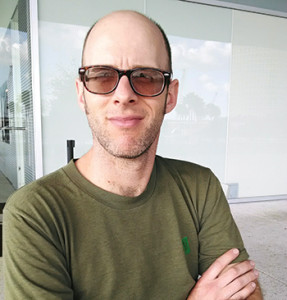
“I kept my eyes out for work that is new or unusual,” Strzynski says. “I think it usually represents an artist who is newer and younger, and art fairs need an influx of newer, younger people.” The 39-year-old Strzynski says he is on the younger end of the spectrum when it comes to art fair exhibitors.
Watts cites craftsmanship, professionalism and innovation as qualities she looked for in artworks: “One of the things we did have in common is we were looking for something a little different, maybe a little unexpected.”
Although the jury process is blind, it’s inevitable that jurors will recognize some artists’ works. While they are called to be objective in their decisions, that doesn’t mean they can ignore their appreciation for particular artists.
“You’re asked to evaluate everything objectively, and that’s what I’m trying to do, but at the same time I’m there because I have some insight into what it is I’m looking at that the other jurors will not,” Strzynski says.
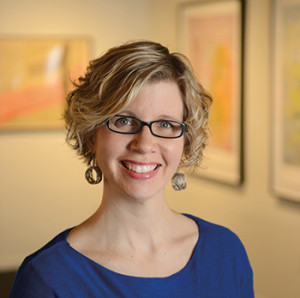
Tasked with viewing thousands of images, how can jurors possibly keep them all straight? Strzynski and Watts say it’s not that hard.
“Because (the images are) presented in such a tiered, systematic way, you don’t really have a hard time,” Strzynski says.
Watts agrees. “The Arts Festival staff has this down to a science,” she says. “They made sure we took a lot of breaks. We could ask to see an image again—they were very accommodating.”
In June, jurors will get to see all the art in person when the festival opens. Says Strzynski, who will exhibit again this year: “One of the things that characterizes the Des Moines Arts Festival is it’s a really good-looking show.”
What’s New at the Des Moines Arts Festival
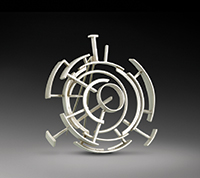
This year’s festival is June 26-28 in Des Moines’ Western Gateway Park. In addition to many new artists and performers—about 60 percent of the artists in the juried art fair are first-timers—here are a few new events:
Metro Arts Alliance Forte Legacy Art Project:
Local artists will invite festival attendees to help assemble a public art project, which will later be installed at Des Moines International Airport.
“If I Could Change the World” Project and Exhibit:
This interactive experience will allow attendees to contribute their ideas on how to make the world a better place.
Register Media Photo Walk:
A Register Media photographer will lead a walk through the festival and offer ideas on how to take engaging photos.
Gospel Brunch (Sunday morning):
A gospel choir will perform on the main stage while brunch is served in the hospitality suite.
Good Vibes Yoga (Saturday morning):
A community yoga session will take place by the main stage. The festival also will include a Habitat for Humanity Blitz Build, the Interrobang Film Festival, music and other live entertainment, about 30 interactive arts activities, a video art installation, a jazz and wine pavilion, artist demonstrations, an Iowa craft beer tent and more than two dozen food booths. More information: desmoinesartsfestival.org.






